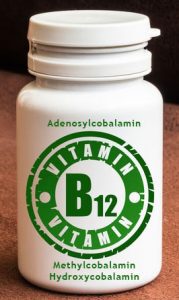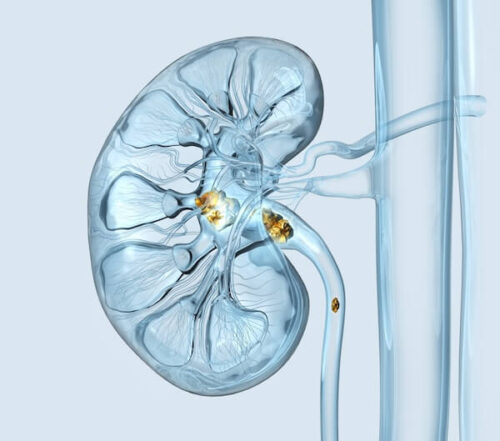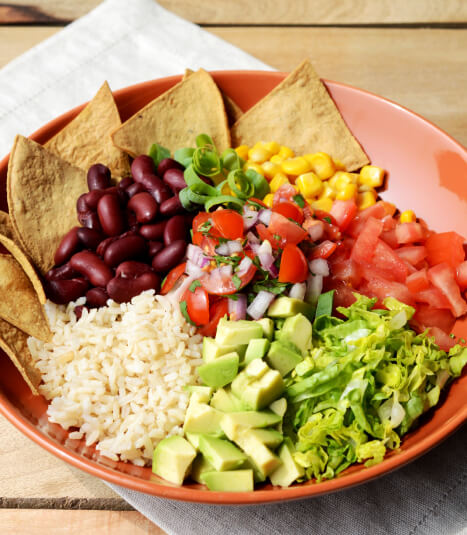Acrylamide Poisoning: Cancer from Overcooked Carbohydrates
News headlines on Thursday, June 16, 2005 warned that a 1-ounce serving of potato chips eaten daily exceeds safety levels for a recently discovered cancer-causing substance known as acrylamide – therefore these foods made by Lay’s, Kettle Chips, Cape Cod and Pringles should require a cancer warning under California’s anti-toxics law – Proposition 65.
The instigating report from the Oakland-based Environmental Law Foundation followed an analysis of 12 varieties of chips. One variety, Cape Cod Robust Russet, contained 6.5 parts per million, which is 910 times more acrylamide than the level that the state’s environmental health agency has determined to be an unacceptable risk. What’s unacceptable? Some of the chips tested pose a risk of one or two cancers per 1000 people, which ‘everyone agrees is unacceptable.’ The lowest acrylamide levels among the 12 tested were found in Lay’s Light KC Masterpiece BBQ chips, but they still contained 38 times the amount that the state considers acceptable.
This is not the first time environmental groups have filed similar notices with the California state government about acrylamide in our foods. In 2002, an attempt was made to require Burger King and McDonald’s to place warnings on French fries because of the acrylamide. That case has been stayed by a Superior Court judge pending a decision from the state’s Office of Environmental Health Hazard Assessment on rules related to acrylamide.
Can Cooked Carbohydrates Be Made Safer?
Consistent with the cliché ‘time is money,’ fast cooking at high temperatures means more profits for companies that are known for their ‘fast and convenient foods.’ Unfortunately, their methods of frying, baking, roasting, and grilling also put the consumer at risk. Rapid heating to high temperatures of an amino acid, asparagine (found in all foods) in combination with the common sugars (found in plant-foods), results in the formation of acrylamide. Cooking temperatures above 185 degrees centigrade (365 degrees Fahrenheit) readily produce this unwanted substance. Most importantly, acrylamide cannot be detected in unheated and boiled foods, because the minimal temperature to cause this conversion is 120 degrees centigrade. (Boiling takes place at 100° C, 212° F).
Common Cooking Temperatures
|
|
100° C (212° F) |
|
Steaming (sea level) |
100° C (212° F) |
|
Steaming (at 5000 ft.) |
95° C (203° F) |
|
Pressure Cooker |
121° C (250° F) |
|
Roasting (coffee) |
190° C (374° F) to 220° C (428° F) |
|
Roasting (peanuts) |
160° C (320° F) |
|
Frying |
150° C (302° F) to 230° C (446° F) |
|
Baking (bread crust) |
120° C (248° F) |
|
Acrylamide forms |
120° C (248° F) |
In this highlighted case of potato chips, manufacturers can reduce (but not eliminate) acrylamide levels by changing how the chips are processed – that is cooking them at lower temperatures and lengthening their cooking times. Even without the acrylamide, these greasy chips still promote cancer by other well-known mechanisms, such as excess calories, immune-system suppression from vegetable fats, and cellular damage caused by trans-fats.
What is Acrylamide?
Acrylamide is a white, crystalline, odorless substance used in a variety of industries. The most common uses are to purify drinking water and for sewage treatment – removing particulate matters by combining with solid impurities making them more easily filtered out of the water. Acrylamide is also used to make dyes, cosmetics, food packaging materials (like paperboard), soil-conditioning agents, plastics, and grouting agents. In each of these uses, some of the original acrylamide remains in the finished product. Also, acrylamide is known to be a component of cigarette smoke.
The Discovery of Acrylamide in Foods
Swedish tunnel workers exposed to large amounts of acrylamide from a water sealant in 1997 were studied and compared to unexposed people. Surprisingly, the control group – those who had not been exposed to acrylamide at work – showed unexpectedly high levels of acrylamide in their bodies. This caused investigators to look for other sources of this agent besides industrial pollutants. By 2002, research led to the discovery of this substance in the diet of the workers. The main food sources were found to be French fries, potato chips, tortilla chips (fried), bread crusts, crisp breads, baked goods, cereals, and coffee. Up to 40% of all foods contain acrylamide.
Note that acrylamide in food is not the result of contamination from environmental sources, but rather from heating foods containing sugars (carbohydrates) and protein. Because acrylamide formation can be the result of traditional cooking methods it is believed to have been present in cooked foods for thousands of years, and acrylamide levels in cooked organic foods would not be expected to be any different than levels in cooked foods that are not organic.
Acrylamide values in selected food product (ppb)
|
Acrylamide values in selected food product (ppb)5,6 |
|
|
|
|
|
McDonald’s French fries |
497 |
|
Popeye’s French fries |
1030 |
|
Wendy’s French fries |
302 |
|
|
|
|
Potato chips |
|
|
Lay’s Classic Potato Chips |
549 |
|
Kettle Chips Lightly Salted Natural Gourmet Potato |
1265 |
|
|
|
|
Commercial Potatoes |
|
|
KFC Mashed Potatoes |
<10 |
|
Idaho Spuds Mashed Potatoes |
0 |
In practical terms, don’t eat French fries, baked chips, and potato chips. Don’t drink coffee since this beverage is made from roasted beans. Does this advice sound familiar? Tea, even black tea with caffeine, is made by low-temperature drying processes, not roasting and therefore would have undetectable acrylamide levels. (See my July 2004: ‘Coffee – Pleasure or Pain,’ and October 2004: ‘Tea Time Increases Life Time.’)
In general, there is a 10-fold difference in the amount of acrylamide between normal cooked and overcooked foods. Therefore, foods will always be safe with boiling and steaming, because the maximum temperature reached is only 100 degrees centigrade (212 F) – below the 120 degrees centigrade required to begin formation of this toxin. Microwaving will also be safe from acrylamide formation with low the temperatures reached by this method – but more research needs to be done on the safety of microwave cooking.
Always focus on the fact that our common cancers, breast, prostate, and colon, are rare in populations whose diets are based on cooked starches and vegetables, such as the rice-eating Japanese. These people, living on their traditional diet, enjoy the world’s record for longevity and also have almost no heart disease, type-2 diabetes, or obesity. Obviously, any acrylamide formed in their foods has had no serious impact on their robust lives.
References:
1) http://www.latimes.com/news/local/state/la-me-potato17jun17,1,47365.story?coll=la-news-state
2) Friedman M. Chemistry, biochemistry, and safety of acrylamide. A review. J Agric Food Chem. 2003 Jul 30;51(16):4504-26.
3) Tareke E. Analysis of acrylamide, a carcinogen formed in heated foodstuffs. J Agric Food Chem. 2002 Aug 14;50(17):4998-5006.
4) Fleck F. Experts launch action on acrylamide in staple foods. BMJ. 2002 Jul 20;325(7356):120.
5) http://www.mindfully.org/Food/Acrylamide-Foods-FDA4dec02.htm.
6) http://www.konsumentverket.se/html-sidor/livsmedelsverket/engakryltabell.htm
7) http://www.konsumentverket.se/html-sidor/livsmedelsverket/engakrylcancerstudier.htm
8) http://www.konsumentverket.se/html-sidor/livsmedelsverket/engakrylkonsumtion.htm
9) Hagmar L, Tornqvist M. Inconclusive results from an epidemiological study on dietary acrylamide and cancer. Br J Cancer. 2003 Aug 18;89(4):774-5.
10) Bingham SA. High-meat diets and cancer risk. Proc Nutr Soc. 1999 May;58(2):243-8.
11) Jagerstad M, Skog K. Genotoxicity of heat-processed foods. Mutat Res. 2005 Jul 1;574(1-2):156-72.
Recommended Articles

What is the Best Formulation of Vitamin B12?

The Truth About Oxalates & Kidney Stones






